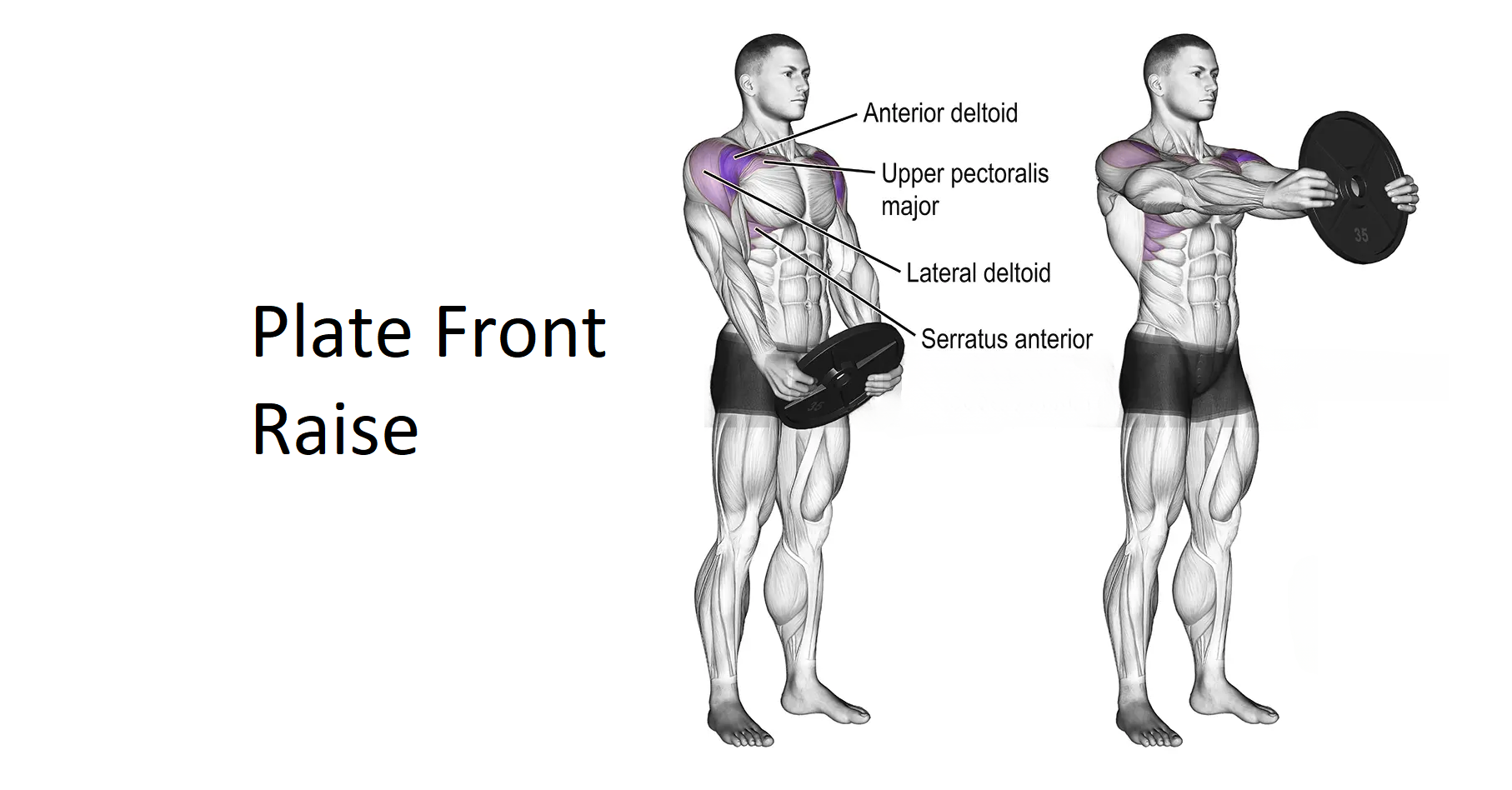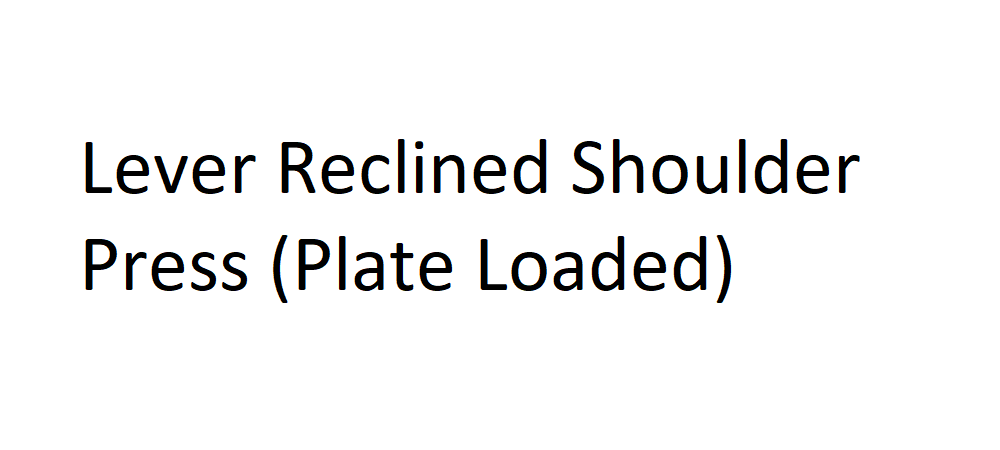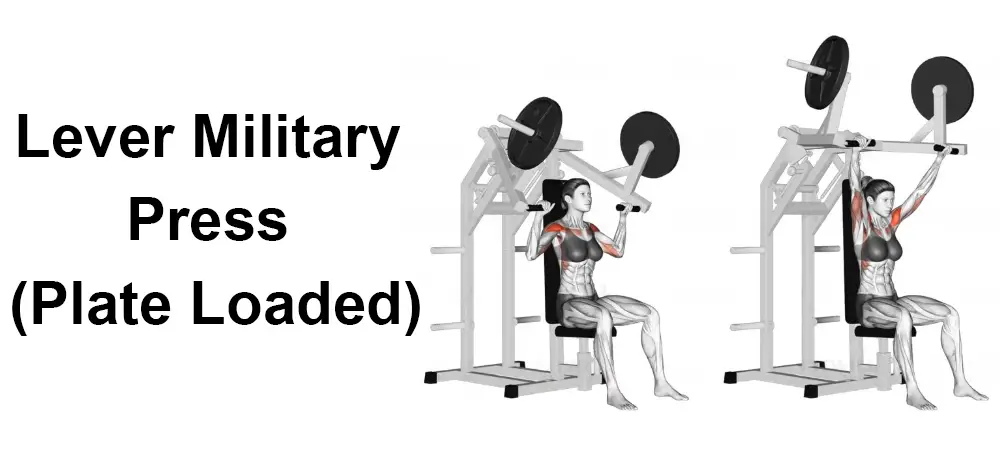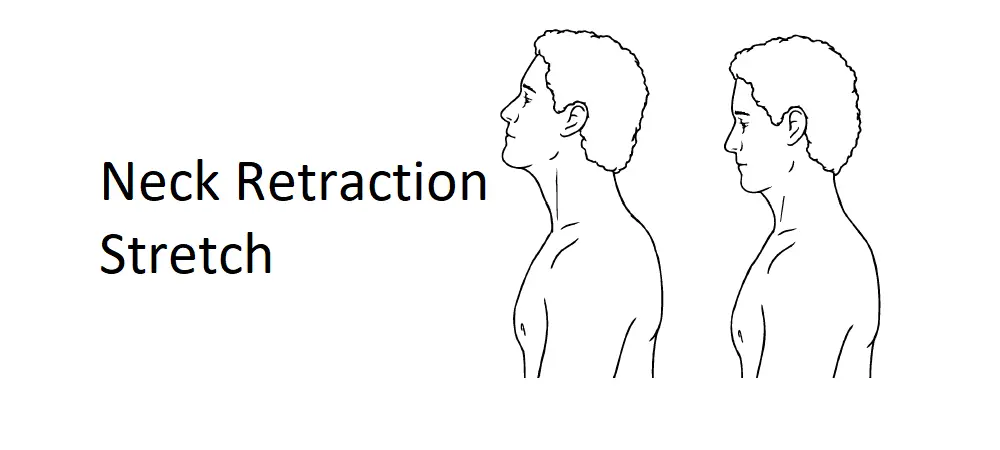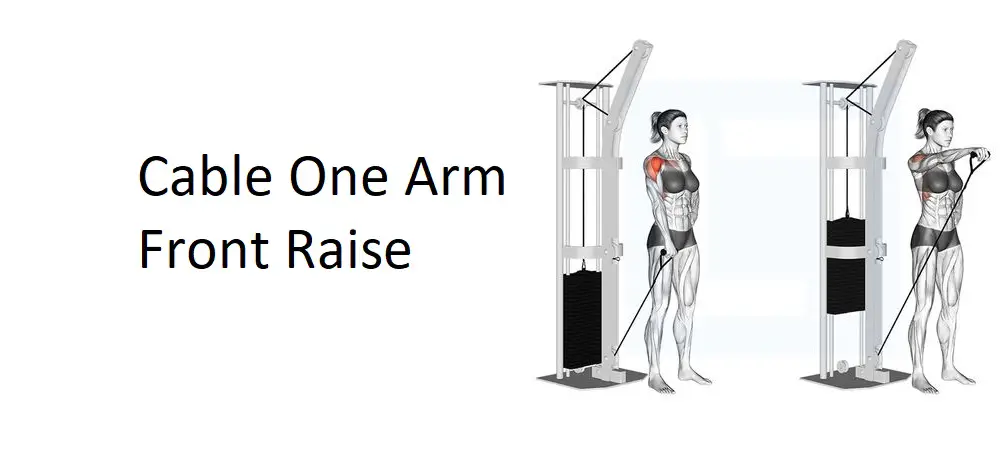The Plate Front Raise is a strength training exercise that targets the front deltoid muscles of the shoulders, along with the upper chest muscles. In this comprehensive guide, we’ll explore the correct technique, benefits, alternatives, and other essential details associated with the Plate Front Raise.
Instructions
Setup:
- Standing Position: Stand with your feet shoulder-width apart, knees slightly bent, and core engaged. Hold a weight plate with both hands in front of your thighs, using an overhand grip.
- Hand Placement: Grasp the weight plate with an overhand grip, ensuring that your hands are spaced evenly apart on the plate.
Execution:
- Lifting Motion: Exhale as you raise the weight plate directly in front of you, keeping your arms extended and parallel to the floor. Maintain a slight bend in your elbows throughout the movement.
- Shoulder Height: Continue lifting the weight plate until your arms are parallel to the floor or slightly below shoulder height. Avoid lifting the plate higher than shoulder level to prevent strain on the shoulder joints.
- Controlled Lowering: Inhale as you slowly lower the weight plate back down to the starting position, maintaining control over the movement. Avoid letting the weight drop or using momentum to lift it.
- Repeat: Perform the desired number of repetitions with proper form and control.
Tips:
- Keep your core engaged and avoid arching your lower back during the exercise.
- Maintain a neutral spine and avoid leaning back or forward excessively.
- Focus on using the front deltoid muscles to lift the weight plate, rather than momentum or swinging.
Benefits
- Front Deltoid Development: The Plate Front Raise primarily targets the front deltoid muscles of the shoulders, helping to build strength and size in this area.
- Upper Chest Engagement: Depending on the grip and hand placement used, the upper chest muscles (pectoralis major) may also be engaged to a lesser extent.
- Shoulder Stability: Performing Plate Front Raises can help improve shoulder stability, which is important for overall shoulder health and injury prevention.
- Core Activation: Engaging your core muscles throughout the exercise helps stabilize your torso and maintain proper posture, leading to improved core strength.
Muscles worked in Plate Front Raise
The Plate Front Raise primarily targets the front deltoid muscles of the shoulders. These muscles are responsible for shoulder flexion, which occurs when you lift your arms forward and upward in front of your body. Additionally, the exercise engages several other muscles to provide stabilization and support throughout the movement:
- Upper Chest (Pectoralis Major): Depending on the grip and hand placement used, the upper chest muscles may also be engaged to a lesser extent. This engagement helps in the stabilization of the shoulder joint and assists in the lifting motion.
- Triceps Brachii: The triceps muscles, located at the back of the upper arm, act as synergists during the lifting phase of the exercise. They assist the shoulders in extending the arms forward and upward.
- Anterior Deltoid: While the front deltoid muscles are the primary movers in the Plate Front Raise, the anterior deltoid, along with the other heads of the deltoid muscles, also assists in the movement to some degree.
- Serratus Anterior: The serratus anterior muscles, located on the sides of the rib cage, help stabilize the shoulder blades and support the movement of the arms forward.
Overall, the Plate Front Raise effectively targets the front deltoid muscles of the shoulders while also engaging several other muscles to provide stability and support during the exercise.
Alternate names for Plate Front Raise:
- Plate Front Delt Raise
- Plate Front Shoulder Raise
- Plate Front Lift
- Plate Shoulder Raise
Alternatives
- Dumbbell Front Raise: Perform front raises using dumbbells instead of a weight plate to target the front deltoids with a similar movement pattern.
- Resistance Band Front Raise: Use resistance bands anchored under your feet or to a sturdy object to perform front raises, providing variable resistance throughout the movement.
- Cable Front Raise: Utilize a cable machine with a low-pulley attachment and a D-handle to perform front raises, providing constant tension on the front deltoids.
- Barbell Front Raise: Hold a barbell with an overhand grip and perform front raises, targeting the front deltoids while also engaging the stabilizing muscles of the shoulders and core.
Conclusion
Incorporating the Plate Front Raise into your shoulder workout routine can help strengthen the front deltoid muscles, improve shoulder stability, and enhance overall shoulder strength. Focus on proper form, control the movement, and consider incorporating alternative exercises to keep your workouts varied and effective.

